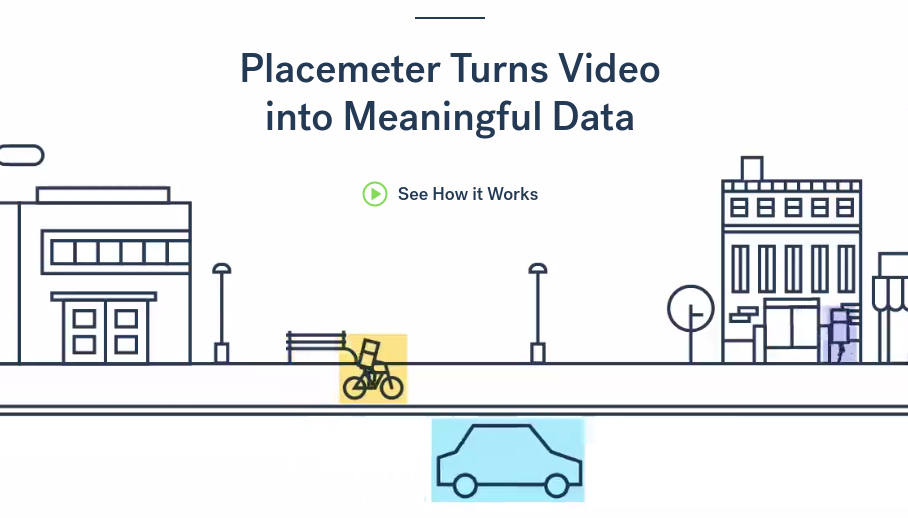 NEWS
NEWS
 NEWS
NEWS
 NEWS
NEWS
“Urban Intelligence” outfit Placemeter Inc. has made a name for itself by offering cities and businesses the chance to measure what’s happening outside of their business premises, on the roads and even in city parks. The company does so by way of real-time video feeds. Its software taps into video cameras placed in strategic locations, and is able to distinguish between things like people and cars, and quantify how many of these “objects” it sees.
But now, Placemeter’s software is a lot smarter. Thanks to a new update the platform now has a new “Object Classification” feature that’s able to distinguish between five different types of objects, namely people, bicycles, cars, motorcycles, and also larger vehicles like trucks, buses and delivery vans. As such, the platform is claimed to be far more efficient than traditional systems used by cities to measure traffic, which involve placing meters by roads or on bike paths. Those older systems are unable to tell the difference between different vehicles, which means Placemeter can provide officials with far more granular and accurate information.
The company trialled and perfected its new system in the French capital Paris, working together with Cisco Systems Inc., which provided the cameras and other assistance. That trial came about because City of Paris officials were after more credible data in order to redesign the “Place de la Nation” public plaza for bicycle use.
![]() Originally, the Placemeter team began gathering data at the Place de la Nation using its older software system, but CEO and founder Alexandre Winter (pictured, right) explained to TechCrunch that it didn’t deliver enough granular data. As a result, the company adapted its software to be able to recognize more things.
Originally, the Placemeter team began gathering data at the Place de la Nation using its older software system, but CEO and founder Alexandre Winter (pictured, right) explained to TechCrunch that it didn’t deliver enough granular data. As a result, the company adapted its software to be able to recognize more things.
“In our experience, we found that the most interesting insights come from comparing two or more object classes, particularly in large areas or mixed-use spaces such as pedestrian plazas,” Winter said in a statement. “Revealing the hidden interplay between cars, bikes and pedestrians is key to informing smart design.”
Placemeter now uses a more traditional computer vision approach to classify the objects it sees, as opposed to deep learning, which it relied on before. Winter expressed hopes that Placemeter could be made smarter still – he said he envisions a time when the system will be able to classify up to 20 different object types. Doing so won’t be easy though, as the company already has trouble when moving from location to location. It found that the system has to be trained to recognize common vehicle shapes in different cities. For example, the cars and scooters in Asian cities are a lot different than those commonly seen in Europe.
Placemeter will surely be of interest to planning officials in cities that are embracing technology. The company currently offers three pricing tiers for its product, starting at $30/month for basic analytics and a single object class, up to $90 a month for all five object classes.
THANK YOU